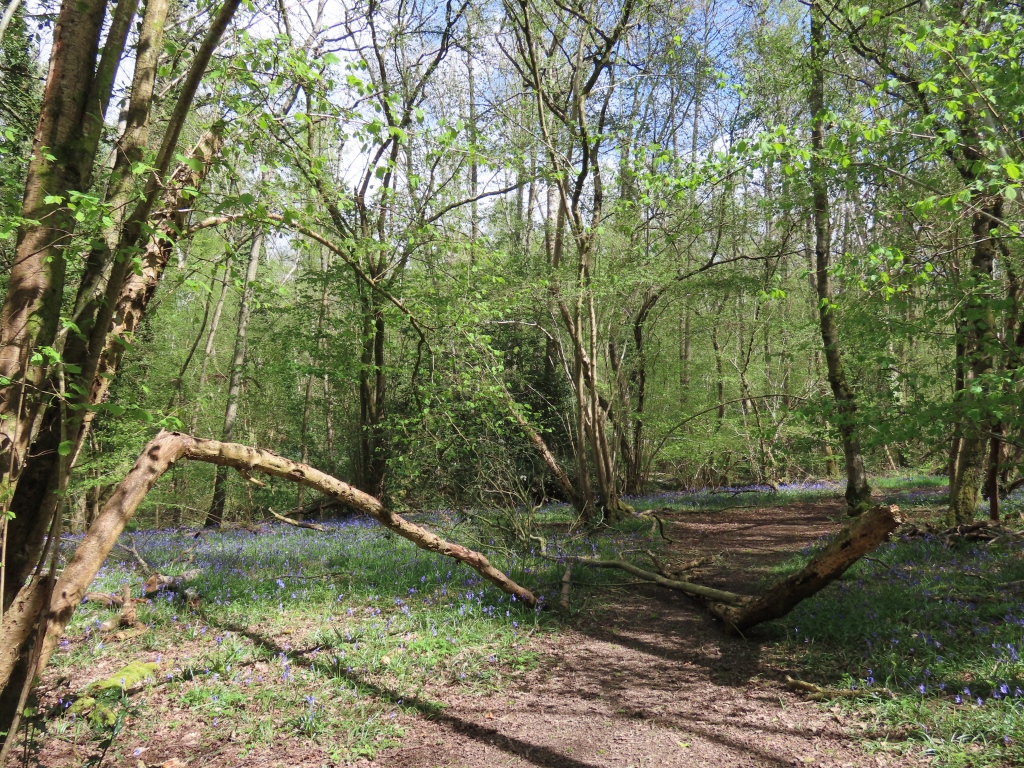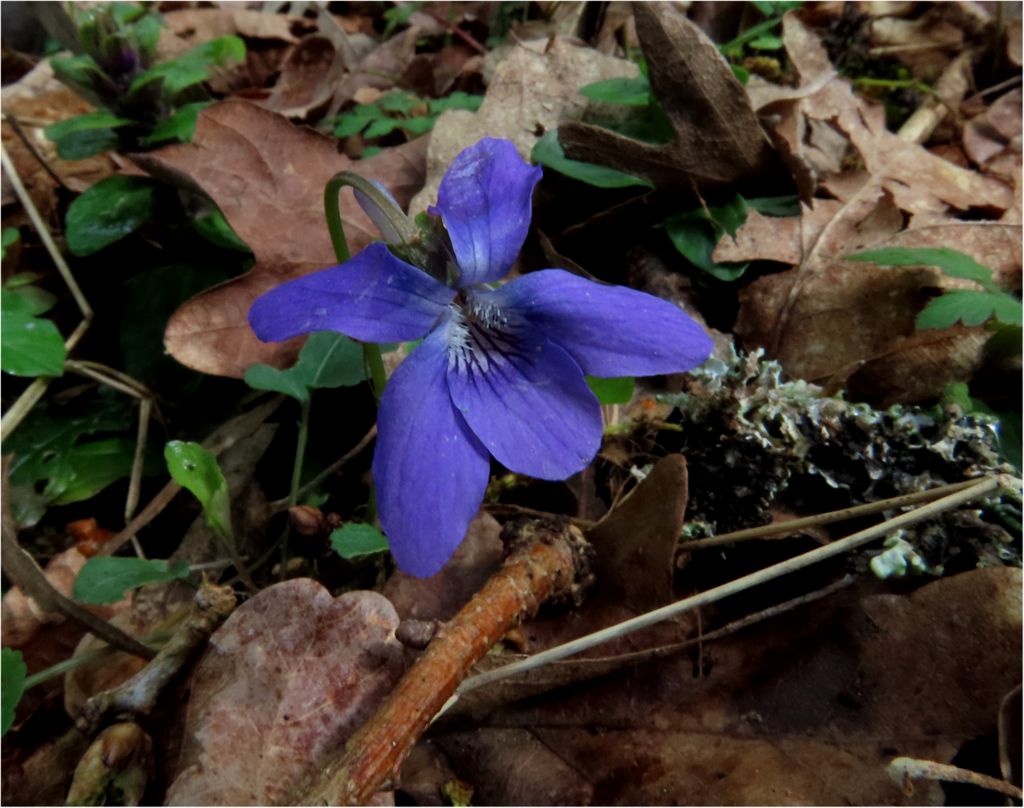Fiona Brown led a circular walk round The Coombes, an area of woodland between Arborfield, Barkham and Bearwood, on the morning of Wednesday 17 April. Starting point was the Bull at Barkham. There was a cold northerly wind, but apart from a brief hail shower at the beginning, the weather was mostly bright. Before the walk started, Fiona gave a brief introduction to the history and geology of the area. The Bull has been a pub since at least 1728. There used to be a smithy here as well and the remains of the forge can be seen in the pub restaurant. The woodland at the Coombes was originally part of Windsor Forest. Last year, Arborfield and Newland and Barkham Parish Councils got together to buy the woodland and ensure that it continues as a public amenity. The bottom of the woodland is on London Clay, overlain higher up by the sands of the Bagshot beds. They date from about 50 to 44 million years ago. At the top of the site are river terrace gravels, deposited about 250,000 years ago. After leaving the car park of the Bull, the route led left along the busy Barkham Road for a short distance before turning right along a track which led up to the woodland. A herd of nine Fallow Deer was grazing in a field on the other side of the road. The bottom of the woods are on London Clay and it was blue with Bluebells, perhaps not quite at their peak yet. Also in flower were Greater Stitchwort, Wood Speedwell, Wood Anemone, Wood Sorrel, Common Dog-violet, Yellow Pimpernel and Bugle. Round lumps on the underside of Wood Speedwell leaves were identified as galls caused by the rust Puccinia veronicae. A number of streams and boggy patches were to be found on the Clay and the leaves of Brooklime, Water Mint and Gypsywort were seen in wetter places. The woodland was alive with bird song and miscellaneous bird calls. Species heard included Blackbird, Robin, Chaffinch, Dunnock, Song Thrush, Blue Tit, Great Tit, Coal Tit, Wren, Chiffchaff, Jay, Stock Dove, Raven and Nuthatch.
The group turned left onto a footpath through the woods and then left again along another path which bordered a field where two Roe Deer were feeding. One of the deer had short velvet-covered antlers. Primroses, a single clump of flowering Ramsons and unfurling Hart’s-tongue Fern were seen in the woodland on the other side of the path. Emerging from the woodland, a sharp right turn led to a track which ran in a north-westerly direction. In the field on the left of the track, a large white long-horned bull was lying down. The insides of its ears and its muzzle were black and its horns were white, tipped with black. It was thought to be a White Park bull. A Buzzard flapped slowly out of a tree beside the track and flew across the field where the grazing Roe Deer had been seen earlier. From this different viewpoint, three more Roe Deer could be seen lying down. Sanicle and Three-nerved Sandwort were in flower, a Green Woodpecker called and a Great Spotted Woodpecker was glimpsed in the trees ahead. As the track climbed up the slope, it came to a section where there were many animal holes in the banks on either side. This was an indication that the underlying geology had changed from Clay to Bagshot Sands. The track led to a T-junction where the group turned right, passing the farm shop at Ellis’s Hill Farm. At the top of the hill, the next track led off to the left, passing a pond where a Grey Wagtail and a Mallard were seen. A footpath turned sharply back to the right, heading towards Bearwood Lakes golf course. Honesty plants were in flower beside the path, and an Orange-tip butterfly with its wings closed rested on one of the flower heads. Nearby, the distinctive hoverfly Helophilus pendulus was seen. It is nicknamed ‘the Footballer’, due to the distinctive stripes on its thorax. A small Turkey Oak next to the path had male and female flowers at eye height. The footpath led to an open area with leggy Heather and bare sandy patches. Common Stork’s-bill, Sheep’s Sorrel, Wall Speedwell, Dove’s-foot Crane’s-bill and Field Wood-rush were found on the open sandy area. There were lumps of Greensand lying around, deposited there when the Loddon Gravels were laid down, since some of the Blackwater’s tributaries come from the Sussex Weald. The next track led eastwards, parallel to the edge of the golf course. The woods on the right of the track were dominated by Rhododendron. At the eastern edge of the woodland, another track led southwards, back towards Barkham. The slime mould Wolf’s Milk Lycogala terrestre was found on a rotting fallen tree. It was stained pink where slugs or snails had been nibbling it. Earlier in the walk, the slime mould Lycogala epidendrum, which bled orange where it had been damaged, had also been seen. Towards the end of the walk, Fiona offered members the option of heading straight for the pub or turning right along a short but muddy footpath which led past Barkham Manor. Everyone chose the latter option – which turned out to be exceedingly muddy, but gave good views of the house and garden. The sprawling branch of an enormous old London Plane tree was propped up by a concrete support. Cuckooflower and Hop were also seen here. Most of the group then stayed for lunch at The Bull.






Pictures by Fiona Brown, Sue White, Rob Stallard and Alan Holmes
